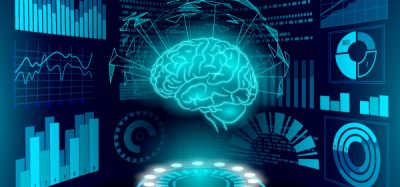Researchers identify early intervention target for cerebral palsy dystonia
Posted: 19 August 2025 | Drug Target Review | No comments yet
Researchers have developed an easy-to-use method for measuring leg dystonia in children with cerebral palsy – allowing doctors to personalise treatments more effectively.


Cerebral palsy affects around one in 345 children in the US, and more than half of them experience involuntary and often painful muscle contractions most common in the leg – a problem called dystonia. This can lead to abnormal movement and postures that make regular activities such as walking very difficult. Traditionally, doctors have relied on subjective assessment for diagnosing dystonia – which can be inconsistent and lead to delayed treatment. For children with cerebral palsy, this delay can result in their condition worsening and becoming more difficult to treat.
An objective measure of leg dystonia
Now, an interdisciplinary research team led by Bhooma Aravamuthan, MD, DPhil, an assistant professor of neurology at Washington University School of Medicine in St. Louis, has identified an objective way of measuring leg dystonia in children. Their method evaluates the extent to which a child’s legs move toward the centre of the body, while they’re sitting down. With this method, doctors can quickly and accurately determine the severity of dystonia in their patients and tailor treatments to their needs.
To better understand the causes of dystonia, the researchers identified the conditions linked with leg movement variability in mice. They suggested that early medical intervention targeting the relevant brain processes could help to treat this complication. The results were published in Annals of Neurology.
Biomarkers aren’t just supporting drug discovery – they’re driving it
FREE market report
From smarter trials to faster insights, this report unpacks the science, strategy and real-world impact behind the next generation of precision therapies.
What you’ll unlock:
- How biomarkers are guiding dose selection and early efficacy decisions in complex trials
- Why multi-omics, liquid biopsy and digital tools are redefining the discovery process
- What makes lab data regulatory-ready and why alignment matters from day one
Explore how biomarkers are shaping early drug development
Access the full report – it’s free!
“An overarching goal of this work is about standardising dystonia assessment by quantifying diagnoses that were previously based on doctors’ gut feelings,” said Aravamuthan, who started the project while being mentored in the lab of co-senior author Dr Jordan McCall, an associate professor of anaesthesiology at WashU Medicine. “These results can be immediately put into clinical practice to help guide treatment selection for children with cerebral palsy and ultimately improve patient outcomes.”
Leveraging technology to measure movement
Despite being a common trait of cerebral palsy, dystonia has proven difficult to study in earlier research because of its range of subtle symptoms. Due to this, Aravamuthan and her collaborators set out to both quantify the clinical presentation of leg dystonia and determine its causal mechanism in the brain – with the goal of making standardised evaluation and treatment available for patients immediately.
Despite being a common trait of cerebral palsy, dystonia has proven difficult to study in earlier research because of its range of subtle symptoms.
The study had two main parts. First, a panel of eight paediatric movement disorder specialists watched videos of 193 children ages three and up with cerebral palsy performing a seated task with their hands. They found that the differences in the child’s leg movements correlated strongly with the severity of their dystonia as assessed from the videos – suggesting that this diversity could be used as a reliable marker of the disorder.
“We were able to establish concrete guidelines that physicians can use today to evaluate dystonia in patients with cerebral palsy more accurately,” said Aravamuthan. “That will make treatment better for our patients as well as support drug development and future research that can rely on this consistent and reproducible assessment method.”
Identifying a brain target in mice
In the second part of the study, the researchers tested whether stimulating specialised brain cells in the region associated with motor control could cause similar leg movement variability in mice as that observed in people. These cells – called striatal cholinergic interneurons (ChIs) – play a key role in coordinating muscle movements and ensuring smooth and purposeful actions – making them a promising target for developing treatments for dystonia.
The researchers selectively excited these neurons in mice over 14 days. They observed that mice with chronic ChI excitation displayed increased leg movement variability compared to mice without ChI excitation – mimicking the dystonia seen in people with cerebral palsy. This did not happen with short-term excitation – showing that sustained activity in these neurons is necessary to produce the dystonia. This suggests that drugs that target overactive striatal ChIs could be used to treat dystonia.
“We know from the clinic that it takes weeks, months or sometimes even years after brain injury for someone to develop dystonia,” Aravamuthan said. “There are medications already in use that focus on reducing excitability of these neurons, but they’re given after dystonia has already been present for a while, which may be why they’re only variably effective. Our work in mice suggests that if you give these medications early and prevent chronic excitation of these neurons, you may prevent dystonia from happening.”
Aravamuthan added that additional experiments and drug trials would be required before such interventions see clinical use.
Related topics
Animal Models, Central Nervous System (CNS), Disease Research, Neurosciences, Translational Science
Related conditions
cerebral palsy, dystonia
Related organisations
Washington University School of Medicine in St. Louis








